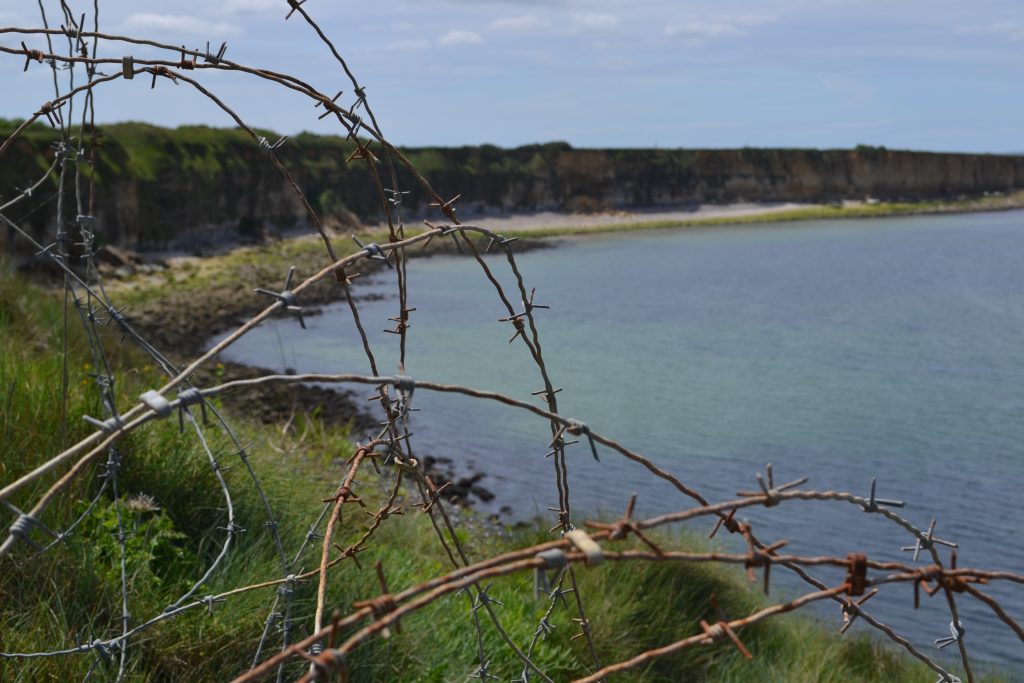“Vive le Québec Libre!”
We all laugh at the old man’s imitation of Charles de Gaulle in the D-Day Academy. As we separate into small groups to look at artillery and military equipment collected in the warehouse, the old man joins us and starts talking about his experiences in 1944.
The Allies liberated his town when he was just six years old, yet he remembers it clearly. The years afterwards were rough on him, and his blue eyes fill with tears. He starts to cry, saying he was unwelcome in his own village in the post-war. He had made friends with some of the soldiers, and they were now a part of his life. Watching this man cry, one of us holding his hand, shows that the scars of this war still run deep in this country.
The countless little hamlets and towns we drive through, bearing the flags of both their country and their liberators during the war are a testament to this enduring connection.
As we participate in the D-Day ceremonies tomorrow, I find myself reflecting on the hardships faced by both our soldiers and the civilians they were sent to protect. This tremendous sacrifice, and the thousands affected by war, even to this day, rings true in the old adage—lest we forget.
-Catherine Charlebois

